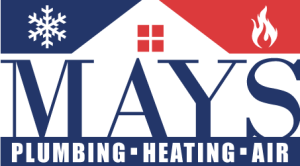Understanding Your Pipes: A Comprehensive Guide to Busting Common Plumbing Myths
The world of plumbing is one fraught with myths and misconceptions, most likely because it is so rarely understood properly by the majority of homeowners. Despite its essential role in making our homes comfortable and liveable, our knowledge often does not go beyond knowing how to turn on a tap. Many a time, these misunderstandings can cause substantial damage, ringing up hefty bills for us!
In view of this, this comprehensive guide seeks to shed light on about popular misconceptions swirling around the field of plumbing. It’s time to bust the myths and unravel the mysteries of plumbing!
Myth 1: Lemons Can Clean Your Garbage Disposal Naturally
One of the most common misconceptions about plumbing is that running a lemon rind through your garbage disposal will naturally cleanse and deodorize it. However, this is decidedly false. While the lemon may temporarily impart a clean, fresh scent, it doesn’t actually sanitize or clean your garbage disposal. It’s the equivalent of spraying air freshener in a dirty room – the underlying grime remains.
Instead, try using a combination of warm water, dish soap and a long-handled brush to give your disposal a thorough cleaning.A safer and more effective method is to turn off the garbage disposal unit, disconnect it from the power source, then clean it using a brush dipped in soapy water.
Myth 2: Running Water While Using The Garbage Disposal Helps The Waste Travel Smoothly
While it’s true that running water can help move certain waste items through your plumbing system, this isn’t a one-size-fits-all solution. Among the items that really shouldn’t be run through the disposal, irrespective of whether water is running or not include fibrous materials like celery stalks or corn husks, pasta, rice, or starchy vegetables like potatoes.
Their fibres can tangle and jam the disposal’s motor, while starches can expand with water and clog your pipes. Therefore, it’s always best to follow the manufacturer’s recommendations for your specific model of garbage disposal.
Myth 3: Flushable Wipes Are Actually Flushable
Despite their name, “flushable” wipes are not actually safe to flush. Unlike toilet paper, they do not disintegrate quickly in water. This makes them a leading cause of clogs and sewer backups. The same rule applies to items such as cotton balls, Q-tips, dental floss, and feminine products. These should never be flushed down toilet, regardless of what the packaging may say.
Myth 4: In Case Of A Leak, The Entire Plumbing Must Be Replaced
This is another widespread myth. Just because a section of your plumbing shows leaks or is rusty doesn’t necessitate replacing the entire system. Many times, only the affected section may need an overhaul. Professional plumbers have the necessary tools and knowledge to isolate and address the problem area, thereby saving you unnecessary expenditure.
Myth 5: All Plumbers Are Created Equal
Not all plumbers possess the same skill set or level of professionalism. Plumbers require extensive training and experience to receive their plumbing license. Hiring a licensed plumber for your plumbing needs means having an expert who is knowledgeable about building codes and can safely and efficiently fix your plumbing issues.
Myth 6: Small Drips Are Not A Serious Problem
Small leaks or drips might not seem like a big deal, but over time, these can lead to significant water wastage, cause your water bill to skyrocket and even result in significant water damage. It may seem insignificant at first, but over time, a dripping faucet can waste large volumes of water. If you notice a leak, it would be prudent to get it fixed right away.
Conclusion
It’s essential to discern the facts about your plumbing to avoid more extensive problems in the future. However, it is equally important to hire a professional in case of any issues. While DIY might be attractive, it is not always the best or most cost-effective solution. When in doubt, always seek the advice of a professional.
Remember, knowledge is power. Don’t let these myths take control of your plumbing or your wallet. Use this guide as a tool to better understand your home’s plumbing and remain myth-free!




